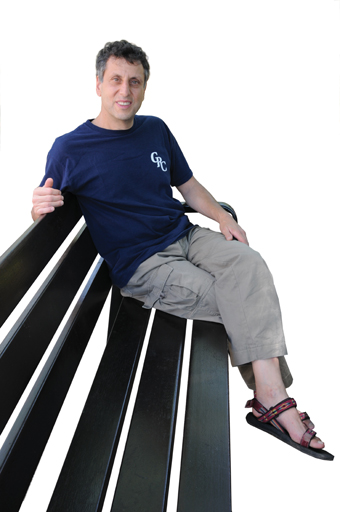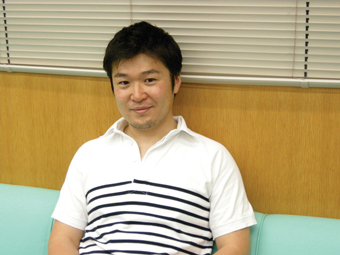Revealing the secrets of the natural evolution of proteins may lead to the ability to develop proteins in the laboratory in a process called "directed evolution"

Ask Charles Darwin and he will tell you that it is not money that drives the world, but rather mutations. It is the mutations that drive evolution: they change the genetic sequence, thereby affecting the function of the proteins created according to the information stored in the genes, and ensure the adaptation of living beings to the constantly changing environmental conditions. In nature, the proteins are able to develop new functions quickly and efficiently, but scientists Those who try to put the same proteins through an accelerated and deliberate process of "evolution in vitro" do not have the same success. The main difficulty is at the stage where the proteins fold into defined three-dimensional structures, which are essential for their proper functioning. These structures are quite sensitive, therefore any change in the genetic sequence may damage the stability of the protein, and cause it to disintegrate and change its three-dimensional spatial structure, which leads to the loss of its ability to function properly. Therefore, most mutations - including those that may give proteins the ability to perform new functions - are eliminated in the processes of evolution, that is, they are removed from the population.
"Why throw the baby out with the bath water?" asks Prof. Dan Toufik from the Department of Biological Chemistry at the Weizmann Institute of Science. "Along with the protein structure, the future potential for adaptation is also destroyed, which considerably limits the rate of protein evolution." How does nature deal with this unwanted phenomenon? Many scientists, in different parts of the world, strive to find an answer to this question. Revealing the secrets of the natural evolution of proteins may lead to the ability to develop proteins in the laboratory in a process called "directed evolution". In this way, it will be possible, for example, to engineer enzymes that will greatly accelerate the development of various chemical reactions. Enzymes that will be engineered according to the researcher's requirements will be able to form a basis for advanced industrial applications in the fields of biotechnology and the pharmaceutical industry.
It is possible that certain proteins, called "chaperones" (meaning "companions"), may help solve the mystery. This group of proteins, found in every living cell, functions as a sort of "rescue team" that mobilizes for the cell in stressful situations. Under normal environmental conditions, one of the functions of the chaperones is to help new proteins formed in the cell to fold properly into a three-dimensional structure. In situations where the cell is under some kind of stress - such as a high temperature, which causes the proteins to be hyperformed - a particularly large amount of saffrons are created, whose role is to "rescue" the proteins that have lost their correct shape, thus helping the cell to survive the heat stress.
Prof. Toufik wanted to check whether it is possible to use saffrons to "rescue" also mutant enzymes created in the laboratory, thereby helping to accelerate the directed evolution of proteins. Dr. Nobuhiko Tokuriki, who carried out post-doctoral research in Prof. Toufik's laboratory, introduced random mutations into a variety of enzymes - in the presence or absence of large amounts of saffrons called GroEL and GroES derived from the E. coli bacterium. The results of this experiment were described in an article recently published in the scientific journal Nature (as well as in the Making the paper section of the same journal). In the article, Prof. Tufik and Dr. Tokuriki showed that the saffrons moderate the effect of many mutations, thus managing to save about a third of the mutant enzymes - which would have died without the help of the saffrons. In addition, enzymes that were assisted by chaperones acquired a twice as large variety of mutations - compared to enzymes that had to manage without help. In this way, the saffrons contributed to increasing genetic diversity and accelerating the rate of acquisition of new traits. In fact, the chaperones also contributed to the functioning of the new enzymes. Mutant enzymes that were created in the process of directed evolution with the assistance of perons were, on average, ten times more efficient and specific compared to unassisted mutants.
Prof. Toufik: "Many scientists hypothesized that the saffrons might play a role in 'rescuing' mutant proteins, but in this study we were able, for the first time, to show that they do indeed do so, on a significant scale and with great power." These days, when the world celebrates the birthday of 200 by Charles Darwin - the man who first described the principles of evolution - this study adds another aspect to the aggregation of evolution, and provides direct evidence that the stability of proteins is a major limiting factor in their evolution, and that mechanisms that compensate for the loss of stability, such as chaperones, play a key role in removing These limitations. Following these findings, which show that with the power of champrons to rescue enzymes that would not have survived in any other way, and to accelerate the rate of directed evolution of proteins in vitro, it can be assumed that champrons will be used in the near future as central tools in the production and development processes of effective enzymes for industrial and medical uses. After all, as Prof. Toufik says, "it doesn't matter if you are evolving in nature or in a test tube, if you are not fast enough - you will never reach the finish line".

postdoctoral
Nobuhiko (Nobu) Okoriki was born in the city of Osaka, Yamaguchi Prefecture in Japan, and began to show an interest in science from a young age, and was mainly attracted to the study of evolution. He was exposed to the field of intentional evolution at the beginning of his studies, and decided that this was the subject he wanted to investigate. Novo was impressed by Prof. Toufik's work in the field, and approached him with a request to conduct post-doctoral research in his laboratory. "Before I met Prof. Toufik, I barely knew anything about Israel - not to mention the Weizmann Institute of Science, but working at the institute was an extraordinary experience for me - working in an excellent research institute, in the company of great scientists, with a lot of activity and a great atmosphere. In addition, I found great interest in Israeli culture, and I was asked many times to meet with the Japanese ambassador, with diplomats and with other guests from Japan." Upon completion of his post-doctoral research at the Pena Novo Institute of the University of Cambridge, United Kingdom.

One response
The picture I get from the review is that real evolution is also directed evolution. In other words, the mechanisms accompanying the random mutations are under pressure from control measures that filter out "bad" development. So it is a miraculous mechanism that has to decide which [mutational] change is viable and should be continued. interesting